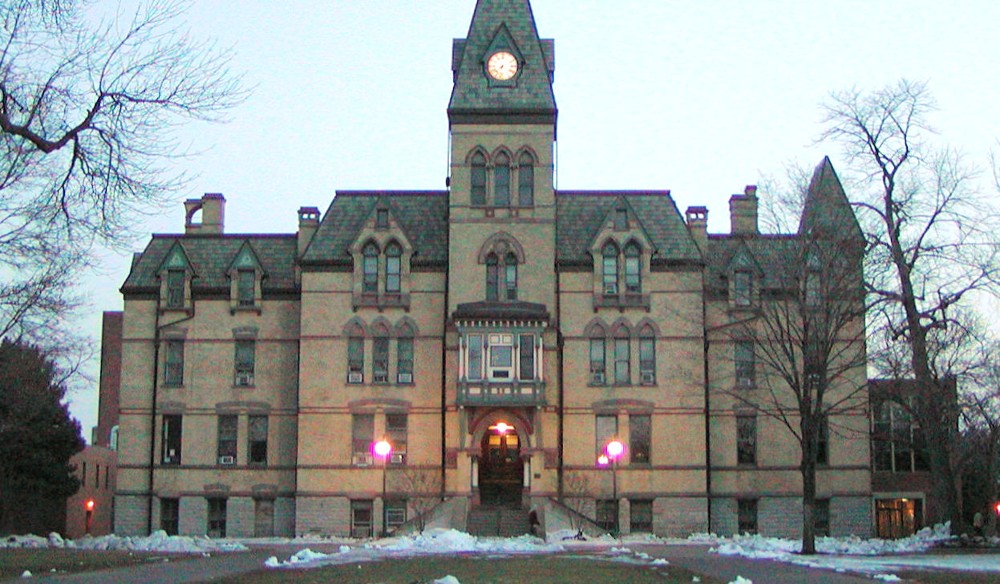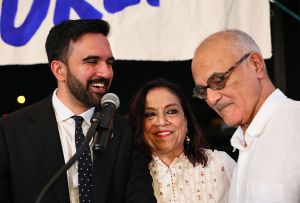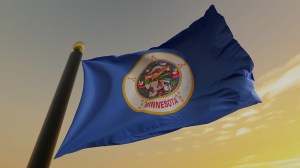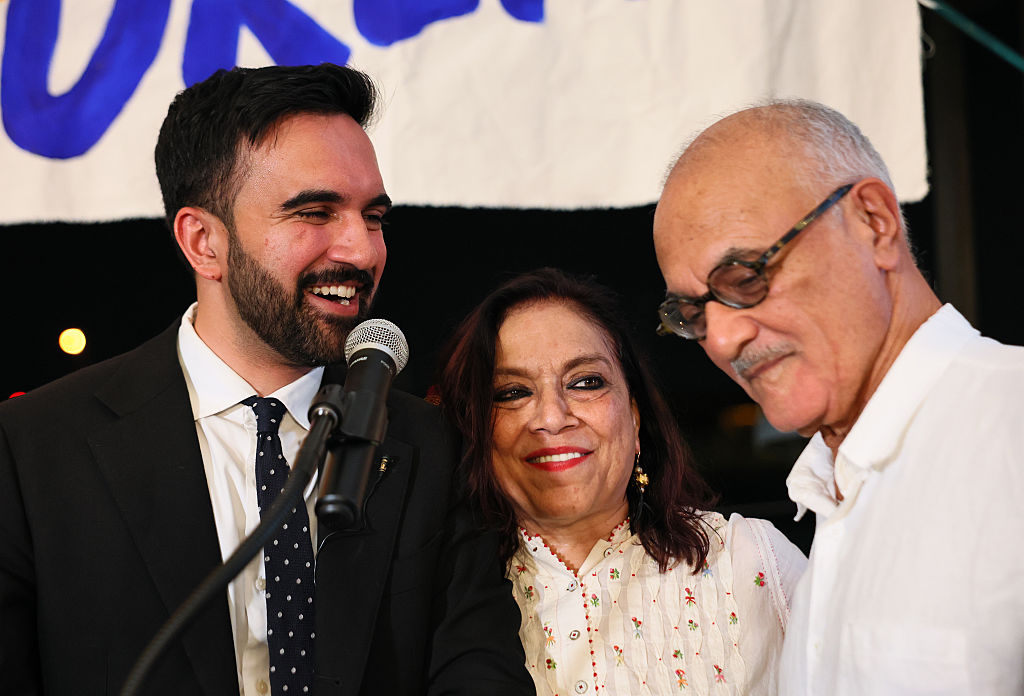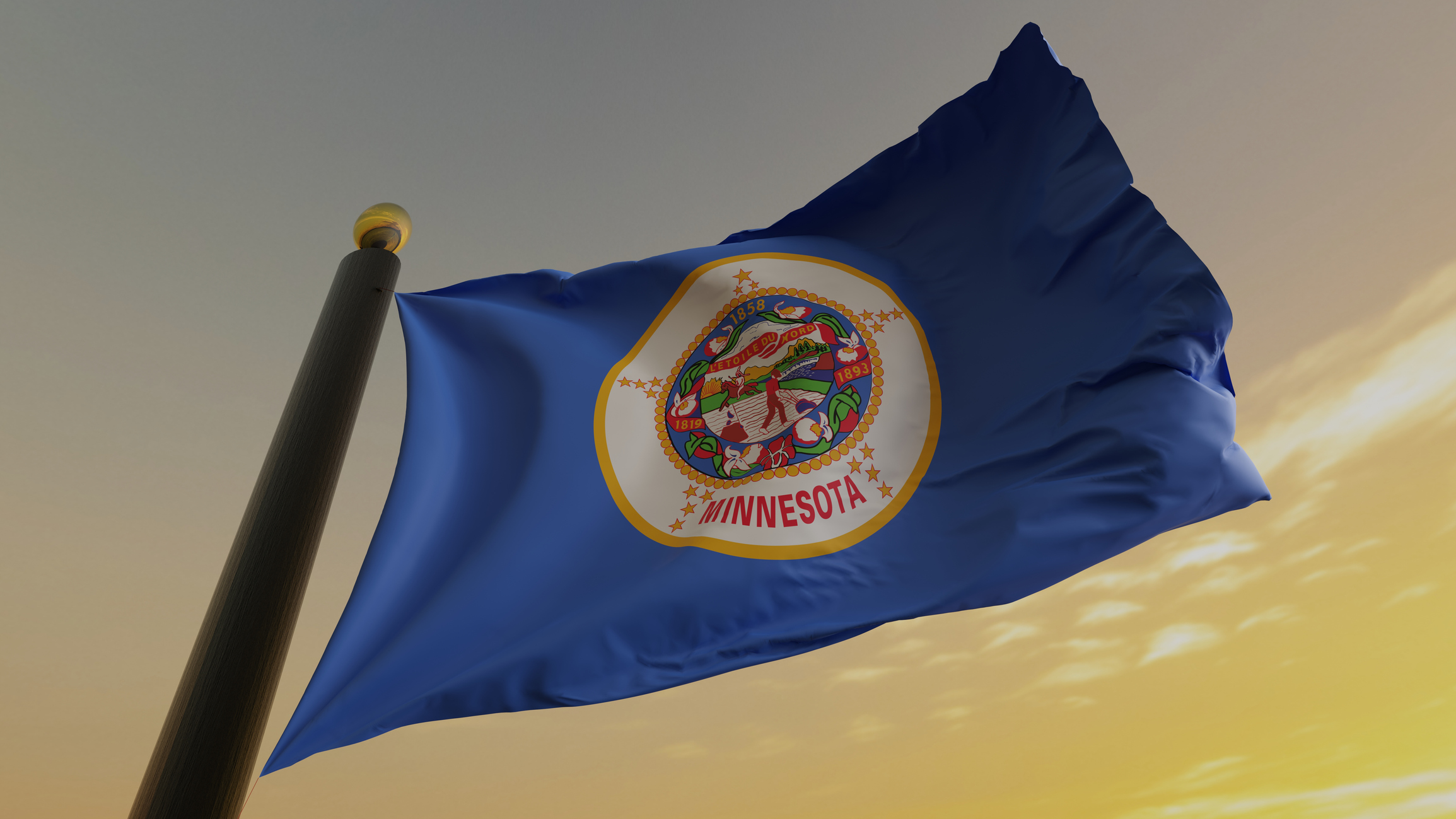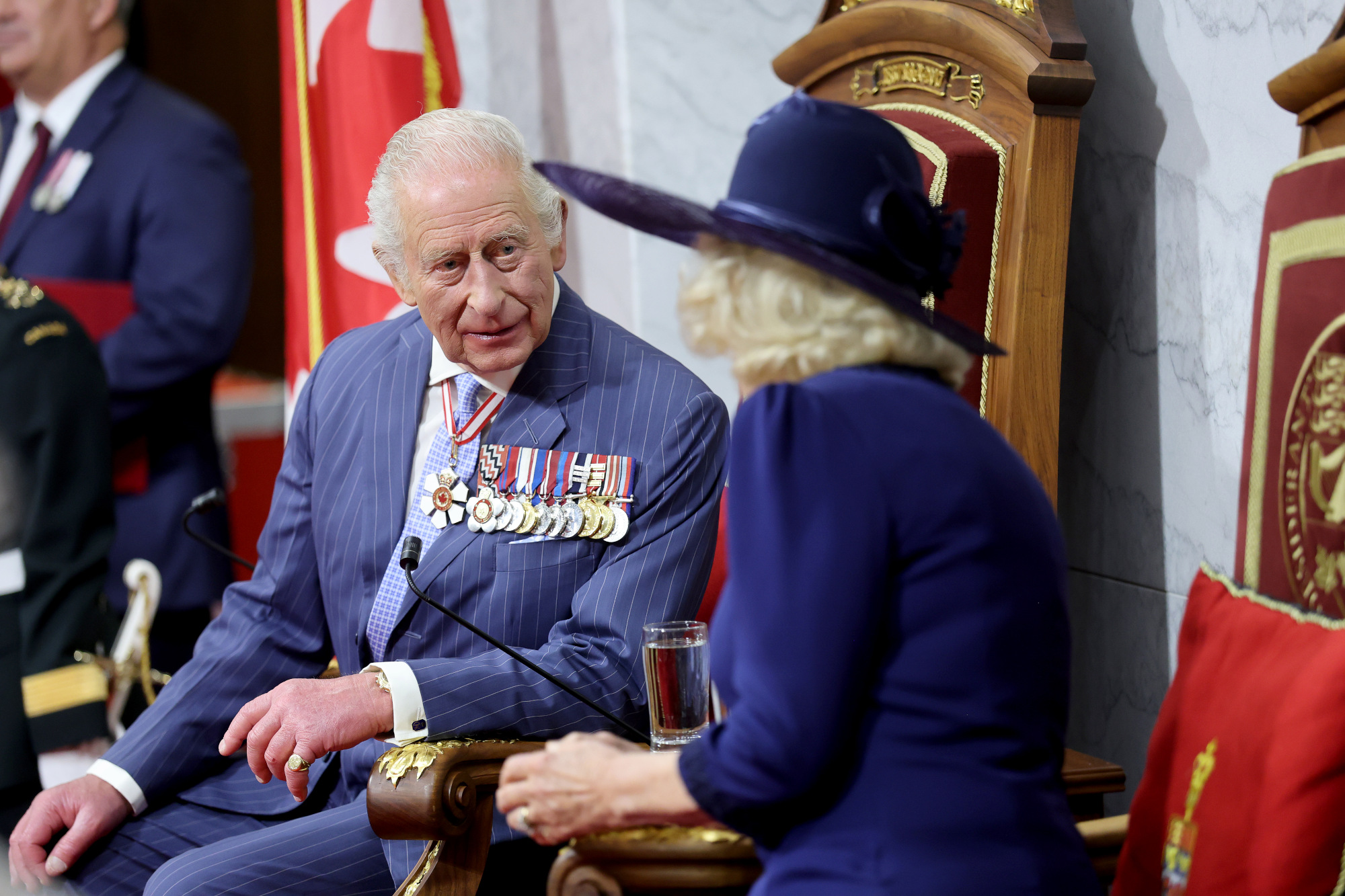The latest news in the Hamline University saga is that a large majority of the faculty — seventy-one of ninety-two members — have called on university president Fayneese Miller to resign. Miller had played the principal part in the dismissal of art history instructor Erika López Prater, after Prater had shown two images of the Prophet Mohammed in her online art history class. One image was a slide of a fourteenth-century painting by a Muslim artist; the other was Muslim painting from the sixteenth century in which the Prophet is veiled.
Condemnation of the Hamline administration for dismissing Prater has been nearly universal in American higher education. Prater had told her class in advance that she would be showing historical paintings of the Prophet created by Muslim artists and encouraged those students who might be offended not to watch. But one Muslim student, Aram Wedatalla, president of the Muslim Student Association, did watch and then complained to the administration.
The story first came to national attention on the front page of the New York Times on January 8. It took little time for the academic press to step in and for the small private university in St. Paul, Minnesota, to be in the unaccustomed spotlight of public concern.
The National Association of Scholars, for which I speak, sides with FIRE, the AAUP, and the many other critics of Hamline: the dismissal of Prater was unjustified. She was technically “non-reappointed” as opposed to “fired.” Her non-reappointment, however, rested not on any serious question about her competence in her subject, her skill as a teacher, or her professional behavior. It rested exclusively on the eagerness of Hamline’s administrators to grandstand about their indignation that a Hamline faculty member might have ruffled the sensitivities of a Muslim student.
Part of what makes this case interesting is the miscalculation of President Miller. She seems to have expected praise for her actions, and even after the eruption of public controversy, she stood her ground. The most extraordinary element was her decision to declare publicly that she subordinates academic freedom to a collection of other priorities. These other priorities include “the traditions, beliefs, and views of students,” and “the dictates of society and the laws governing certain types of behavior.”
President Miller was not entirely wrong to say that “academic freedom does not operate in a vacuum.” But her application of these strictures to the case at hand was woeful. She saw (and presumably still sees) in Prater’s art history lesson an affront to the “rights of students” to be protected from seeing or hearing something they dislike.
Notably, the president’s reflexive effort to defend Muslim students (maybe just one Muslim student: there has been no collective uprising) from the possibility of glimpsing the image of the Prophet in a Hamline class has a history.
Miller was appointed as Hamline’s president in 2015, and was introduced by the university as “the first African American and second woman to hold the position.” The identitarian theme was not new for her. Prior to her Hamline appointment, she had been “dean of the College of Education and Social Services and professor of Leadership and Developmental Sciences at the University of Vermont. From 1985 to 2005, she was a professor of education at Brown University, served as director of the Center for the Study of Race and Ethnicity in America, and was the founding chairman of Ethnic Studies.” Her scholarship comports with these appointments: “She has published several books and articles on the social, racial, and political development of adolescents, and conducted research for the State of Rhode Island on race and gender bias in the courts, and on school-based truancy courts.”
This is to take nothing from her contributions to Hamline’s curriculum and institutional successes, but it makes clear that President Miller has long had a deep investment in woke politics. In her first recorded interview as president, she said, “One of the things I like about Hamline is the focus on social justice.” She says other institutions have moved away from that commitment (they have?) but Hamline is standing firm. “I want students to understand what it means to be part of a civil society, to be part of a civil society you have to be actively involved in all aspects of the community, and that includes politics.”
In 2020, Hamline University announced the creation of “the George Floyd Endowed Scholarship.” They did so twenty-six days after Floyd died in police custody. President Miller in announcing the scholarship explained, “It is through education that we create genuine change in hearts and minds that is so important to creating a just and equal society. The George Floyd Endowed Scholarship will provide the tools of change for future generations of young men and women who will lead the way to a better tomorrow for all of us.”
In any case, President Miller has not been shy about promoting her ideology. Doubtless the Prater situation struck her as an opportunity to represent her fierce determination to advance a form of diversity, rather than an occasion to instruct students on the meaning of intellectual freedom and tolerance.
The negative response from her own faculty and from American higher education at large may indicate that we have reached a turning point. Are even liberal faculty exhausted with efforts to suppress intellectual freedom and procedural fairness? Has the woke revolution reached its Thermidore?
Hamline’s location in St. Paul makes it a natural destination for Muslim students. I haven’t found any estimate of the percentage of Hamlin students who are Muslim, but the Sahan Journal, a St. Paul news organization “dedicated to reporting for immigrants and communities of color in Minnesota,” says “31 percent of Hamline’s undergraduate students are people of color, up from 18 percent a decade ago. Hamline’s website reports that 44 percent of the 2022 incoming class are BIPOC.”
It is a safe guess that at least 200 Hamline students are Muslim; it is also a safe guess that Hamline would like to grow that number. In this context, President Miller’s sensitivity to possible slights against Islam makes sense. And Aram Wedatalla, the young woman who is president of the Muslim Student Association and who complained about Prater, exercised the kind of leadership one expects from a minority group seeking to establish itself: find a grievance and run with it.
Wedatalla found a highly receptive audience among Hamline administrators, one of whom quickly sent out an email describing Prater’s actions as “undeniably Islamophobic.” That assessment was echoed by the Minnesota chapter of the Council of American-Islamic Relations (CAIR), though the national CAIR publicly disagreed.
Hamline’s faculty weighed in on January 16 with a public letter to Hamline students in which they agreed that Islamophobia is a problem in America, assuring the students that the faculty have their interests at heart, but explaining that classrooms are sometimes “challenging” and “uncomfortable.”
This is what passes in higher education as a teachable moment: using the occasion to praise the level of discussion. The Hamline administration, however, wasn’t having it, and the divisions are now solidifying. Thirteen students, says CBS, “including members of the Hamline Undergraduate Student Congress, the Diversity Initiatives Steering Committee and the Muslim Student Association,” are backing the president. Prater has filed a lawsuit, and the faculty have voted overwhelmingly that President Miller should be dismissed.
From a distance, I would say that Hamline offers a microcosm of a new religious minority trying to find its way in the secular pluralism of American higher education. One option is plainly for Muslims to model themselves as a victim group, finding all sorts of insults and invidious treatment and demanding compensatory privileges. Taking umbrage at an innocent art history lecture is one way to fuel that approach. Another option is to recognize that American colleges and universities are wide open and eager to enroll as many students as they can regardless of religious or national background. This eagerness extends to creating all sorts of accommodations and even blandishments, and it presents a path forward in American society for the graduates. So does the victim path, but the destination is more limited and takes the form of positions in the diversocracy.
Will what happens at Hamline stay at Hamline? Too soon to say, of course, but it would be easy to come up with a list of college and university presidents who have over-leveraged themselves by making promises to eradicate “systemic racism” from their campuses by expanding diversity administrators and trampling on the academic and intellectual freedom of faculty members.
For more than a generation, American higher education has been urgently seeking out men and women who can plausibly make the case for overriding the pursuit of truth when it gets in the way of an emotionally satisfying narrative and who regard appeasement of group grievances as far better preparation for civic life than learning the arts of self-government.
So I hope the backlash that has started at Hamline will catch on.



